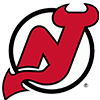Starting this past week and continuing through the last week of the season, the Weekly Hitter Rankings will include individual hitter rankings. They'll be added to the Sunday night update, and they'll be refreshed before the start of the Friday games. The refresh is because the rankings are provided both for the whole week, and for the Monday-Thursday and Friday-Sunday periods, to facilitate setting NFBC lineups.
The rankings are based off the NFBC Cutline scoring. This is a best ball contest whose scoring system is designed to mimic that of standard roto 5x5 scoring. I know this first-hand, since I was a consultant when the NFBC designed the contest.
Each batter is projected using the site's Default Batting Order page and Probable Pitchers grid. The update accounts for any changes in the schedule and tweaks to the batting order.
Each pitcher has an innings projection, which is also used for the Weekly Pitcher Rankings. The quality of the opposing pitcher massages the player projections, along with the team's bullpen which covers the remaining frames.
Early in the season, projections drive the rankings. As the season progresses, these projections will be adjusted to reflect the player's actual production.
The individual player's projection is essentially a sum of the week's daily (DFS) projections. The stats are then plugged into the Cutline formula to generate the projected points.
- At Bat: -1
- Hit: 4
- Run: 2
- Home Run: 6
- RBI: 2
- Stolen Base: 5
The player and his first and second half of
Starting this past week and continuing through the last week of the season, the Weekly Hitter Rankings will include individual hitter rankings. They'll be added to the Sunday night update, and they'll be refreshed before the start of the Friday games. The refresh is because the rankings are provided both for the whole week, and for the Monday-Thursday and Friday-Sunday periods, to facilitate setting NFBC lineups.
The rankings are based off the NFBC Cutline scoring. This is a best ball contest whose scoring system is designed to mimic that of standard roto 5x5 scoring. I know this first-hand, since I was a consultant when the NFBC designed the contest.
Each batter is projected using the site's Default Batting Order page and Probable Pitchers grid. The update accounts for any changes in the schedule and tweaks to the batting order.
Each pitcher has an innings projection, which is also used for the Weekly Pitcher Rankings. The quality of the opposing pitcher massages the player projections, along with the team's bullpen which covers the remaining frames.
Early in the season, projections drive the rankings. As the season progresses, these projections will be adjusted to reflect the player's actual production.
The individual player's projection is essentially a sum of the week's daily (DFS) projections. The stats are then plugged into the Cutline formula to generate the projected points.
- At Bat: -1
- Hit: 4
- Run: 2
- Home Run: 6
- RBI: 2
- Stolen Base: 5
The player and his first and second half of the week schedule are presented, followed by the Full Points Projection and the number of projected homers and steals for the week. The HR and SB are the actual stat projections, as opposed to the projected points for each. The same is done for Monday through Thursday, finishing with the data for Friday to Sunday.
The table is sortable, so you can focus on the full week or either of the segments. You can also sort by points, homers or steals to best address your lineup needs.
While the concept is useful, there are some shortcomings. Some of the pitfalls are fixed with the mid-week update, but as diligent as we are with projected lineups, teams are fluid with their batting orders. We don't know when managers will opt to give a player a rest. Not to mention, there are a few teams rotating several players through a few lineup spots which can't be captured in a static default order.
As such, when using the table to help set your lineups, keep in mind that the assigned playing time is a best guess. Granted, we'd all be making a similar guess when setting our lineups. That is, we're all using the same information that drives the rankings. The best approach is to have the rankings identify the two or three best options for a roster spot, then you can dig in deeper and consider the likelihood of each player appearing in all their team's games that period.
Fortunately, the site archives every batting order for every team. As more data is available, I'm going to use it in conjunction with the default orders to better project each hitter's playing time for the week. If a team is rotating three players through two positions with a righty on the hill, it won't be long before each is projected for around two-thirds of those plate appearances. Currently, two would make the default lineup, while the third gets shortchanged.
I consider this whole project as a work in progress, thus I am happy to take suggestions. I can't promise to implement everything since it must be something I can automate with the code and that doesn't crowd the page even more than it is now. Once obvious improvement is being able to isolate positions. Perhaps making the chart downloadable to Excel so the user can add filters is the easiest way to accommodate that improvement.
Please feel free to make more recommendations in the Discussion below.




































